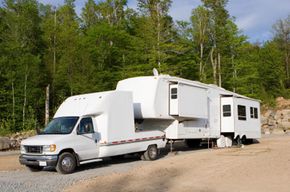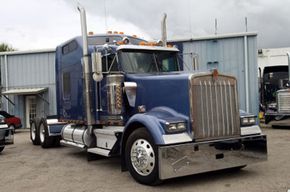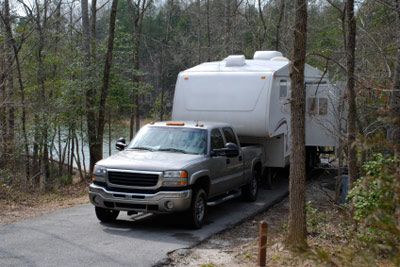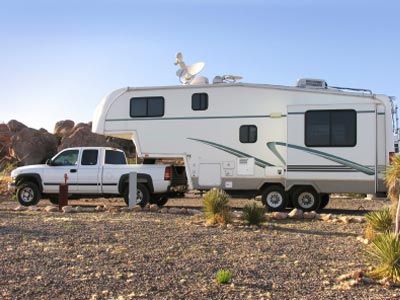Driving a tractor trailer can be quite an experience. It's not like driving any other type of vehicle. The tractor or towing vehicle is always shorter than the trailers, which can reach 53 feet in length. With all the room to haul, you might think the trailer can out-muscle the truck. And you'd be right -- they can. But tractor trailers aren't the only types of vehicles with long trailers. What makes them unique is how they tow trailers.
What separates a tractor trailer from your common light-duty pickup truck is the presence of a fifth wheel. A fifth wheel isn't stashed somewhere on the undercarriage of the truck -- it's the hitch mechanism that connects the tractor to the trailer. When you tow a boat or a trailer with a pickup truck, for the most part you're using a trailer with a hitch and a hitch coupler. A fifth wheel takes the place of the hitch. The benefit of a fifth wheel is the turning radius, which can really be seen when the truck is backing up. A skilled driver can maneuver a trailer into tight spaces by turning the tractor at very sharp angles. It's not uncommon for a tractor trailer to form an L or right angle while backing up to a loading dock -- or even taking left and right turns on city streets.
Advertisement
Light trucks can also be equipped with fifth wheels. Along with their turning advantages, fifth wheels are capable of handling much heavier trailer loads than small, hitch-based trailers. When a pickup truck is outfitted with a fifth wheel, it can become a smaller version of a tractor trailer. Fifth wheels are commonly mounted in the center of the truck bed, over the rear axel, which is the area that supports the most weight.
In this article, we'll provide some tips on driving a vehicle with a fifth wheel. On the next page we'll learn how to properly back up a trailer attached to a fifth wheel, give you some pointers on how to attach and detach trailers and inform you about driving through city traffic.
Advertisement




